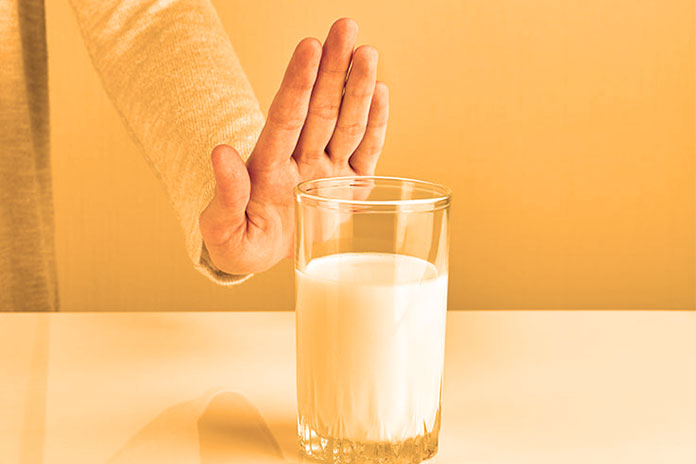Table of Contents
What Is Lactose Intolerance?
Lactose intolerance is the body’s inability to completely digest the sugar (lactose) present in milk and its derivatives due to a deficiency of the lactase enzyme. This condition derives malabsorption with very varied symptoms: abdominal pain and cramps, swelling, diarrhea and flatulence but also nausea, headache, exhaustion and skin rashes.
Diagnosing Lactose Intolerance: Tests And Exams
It is important to be certain of the diagnosis to avoid unnecessarily excluding the important nutrients of milk and dairy products. The test used is the breath test, the results of which may, however, not be sufficient to make the diagnosis: it is, in fact, important to evaluate one’s clinical history. This will make it possible to define the maximum tolerability threshold; in lactase deficiency, the severity of the symptoms depends, in fact, on the quantity of lactose ingested and the degree of intolerance.
Do All Dairy Products Contain Lactose?
Lactose is the main milk sugar and is present in all types of animal origin, including goat, sheep and donkey milk. It is also present in their derivatives, especially fresh and spreadable cheeses, butter, cream and ice cream.
Are There Dairy Products That Can Be Consumed Even By Intolerant People?
Some derivatives can also be consumed in case of intolerance: yogurt is often tolerated due to the minimum lactose content, and some cheeses because they have very little or no lactose. Grana Padano DOP is naturally lactose-free and is a milk concentrate, but with less fat than the milk with which it is made; it supplies all the nutrients found in milk: proteins of high biological value, including the nine essential amino acids, vitamins B12 and A, and the highest amount of calcium among all the most consumed cheeses.
Also Read: Did You Know That Milk Helps Decrease Tiredness And Fatigue?
What Alternatives Exist To Products With Lactose?
Delactosed milk and many dairy products are also produced in a lactose-free version. There are also similar alternatives of vegetable origin, such as soy, rice or oat drinks which can replace milk but not all of its nutrients in quality and quantity. We remind you that some foods indirectly contain lactose because they require milk in their preparation: for example, many baked goods. Even in this case, however, lactose-free versions are on the market.
Lactose… Hidden
In some cases, lactose is hidden in “unsuspected” products as a result of their processing: it happens with frozen foods, condiments and ready-made dishes, some baby products, biscuits, snacks, mixes for sweets, creams, soft drinks and fruit juices, creamy liqueurs and cured meats. It is, therefore, important to read the labels to ensure that even the slightest amount of lactose is present.
Even Medicines Can Contain Lactose
Some drugs, vitamins and supplements may contain small amounts of lactose, generally used to formulate excipients. However, it must be said that the quantities are so small as to be normally well tolerated, despite these doses still adding to the amount of dairy products in the diet. In some cases, there are lactose-free pharmaceutical alternatives.
How To Avoid Nutritional Deficiencies
Milk and its derivatives are a source of important nutrients such as calcium, a mineral necessary for the health of our body, bones and teeth. Those who cannot eat dairy products can take it by drinking natural effervescent waters with a high calcium content and consuming green leafy vegetables, almonds, sesame seeds, dried legumes, and various fish and molluscs.
However, calcium is not always perfectly absorbable by our body, but in Grana Padano DOP, it is bioavailable for about 70% of its quantity; if the vitamin D levels are regular, the calcium in vegetables instead has a bioavailability that often does not exceed 2 -10% and a low amount by weight.
We Do Not Give Up Meals Away From Home
When avoiding lactose is not possible, and the meal risks becoming a moment of stress instead of pleasure, there are supplements on the market containing the enzyme lactase, which can be taken with meals and help us “digest” the lactose. When we are not certain of the quantities of lactose in foods prepared outside the home, it is advisable to consume small portions and take the lactase supplement to reduce the gastrointestinal effects of lactose.
Probiotics And Lactose Intolerance
In recent years, scientifically based awareness has increased that taking probiotics helps reduce symptoms in lactose-intolerant individuals. The mechanisms seem varied: these “good” bacteria can stimulate the production of a class of enzymes similar to lactase but also improve colonic compensation. In the case of lactose intolerance, it is, therefore, advisable to carry out cycles of probiotics.
Also Read: Why The Lactose-Free Diet?


